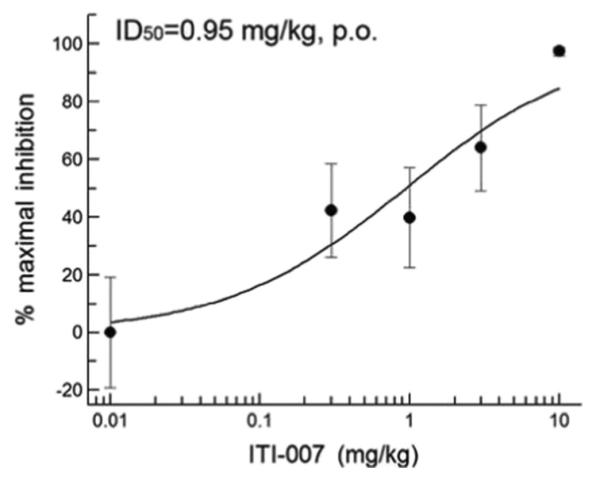Fig. 3.

Dose–response curve for inhibition of AMPH-induced hyperlocomotion by ITI-007 in rats. The psychostimulant drug D-amphetamine was used to elicit hyperlocomotion in rats. Sprague– Dawley rats (N=4/group) were habituated to locomotor activity chambers (AccuScan, Columbus, OH) for 60 min then given a specified oral dose of ITI-007 (0.3–10 mg/kg, in 0.5 % methylcellulose in water, p.o.) or vehicle (0.5 % methylcellulose in water). Thirty minutes later, the rats were injected with vehicle (saline, i.p.) or with D-amphetamine (D-AMPH) (1 mg/kg, in saline, i.p.) and locomotor activity monitored for an additional 2 h. Total distance traveled was quantitated and averaged for each treatment group. The mean (+SEM) total activity (centimeters traveled) recorded for vehicle-treated rats given D-AMPH was 21,583±4,153. Percent inhibition of each ITI-007 treatment group compared with D-AMPH group was calculated. The activity level in the D-AMPH + vehicle group was used to determine 0 % inhibition. Data were analyzed to determine an ID50 using a four-parameter logistical fit (Excel Fit software, IDBS)
